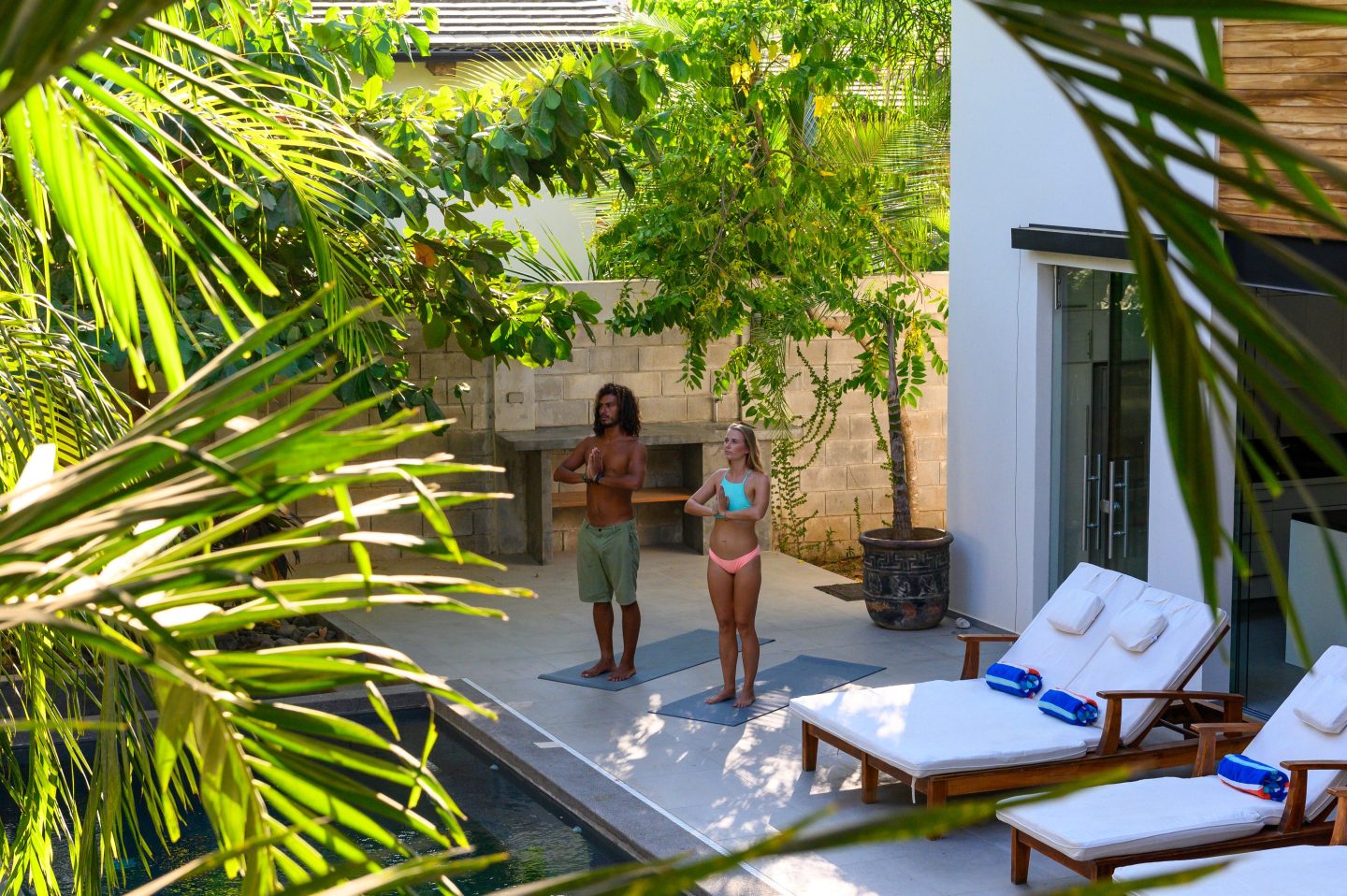
《我們的家》(Our House)是克羅斯比、斯蒂爾斯與納什樂隊(Crosby, Stills & Nash,一民謠搖滾超級和聲組合)的經典曲目,如果時間換到21世紀,那么格雷厄姆·納什可能會把1970年代的嬉皮士和勞雷爾峽谷換成2020年代的幣圈大佬和波多黎各,寫下如下詞句:“我們的房屋美輪美奐,身在院中,曼妙海景就在眼前。過去生活多艱,如今卻輕松無比,多虧了稅收優惠。”
新冠疫情爆發以來,面對居高不下的生活成本,想要獲得更寬敞生活空間的富人和遠程辦公族一直在向美國其他州甚至國外遷移。在此期間,佛羅里達州一度成為最受大家歡迎的目的地,但隨著大量人口的涌入,“陽光之州”的房價也出現暴漲,高昂的房價讓許多原本在此養老的退休人士不得不遷往阿拉巴馬等房價更低廉的地方。現在,遠程辦公族和超級富豪又找到了新的目標:波多黎各的豪華別墅。
豪宅地產公司Weitzman的負責人兼董事總經理彼得?貝澤里告訴《華爾街日報》(Wall Street Journal),自2012年開始大幅減稅以來,這一趨勢已在慢慢發酵,但真正進入“快車道”是在2019年,當時,作為第60號法案的組成部分,若干法條得到了修訂,只要符合條件,新遷入波多黎各的外地居民即可不再支付任何聯邦稅款。如此一來,同樣氣候溫暖、陽光明媚的波多黎各就成了比佛羅里達更好的遷徙目的地。雖然佛羅里達州的整體稅收全美最低,不用繳納所得稅,且綜合銷售稅平均僅略高于7%,但聯邦稅仍是該地居民不得不承受的負擔。受強力減稅措施吸引,加上遠程辦公的興起,幣圈人士、家庭、數字游民和企業等各色人士紛紛涌向這個小島。
“富豪紛至沓來,波多黎各儼然已經成為‘高凈值家庭俱樂部’”彼得?貝澤里說。
Invest Puerto Rico的首席執行官羅德里克?米勒在接受Realtor.com采訪時表示,2020年開始的這輪購房熱潮為波多黎各經濟注入了“新的活力”。根據蘇富比國際地產公司(Sotheby’s International Realty)提供給本報的數據,在豪宅林立的多拉多海灘地區(Dorado Beach area),百萬美元豪宅的售價中位數已從2021年的340萬美元飆升至2023年的620萬美元。雖然最近由于經濟下行、加密貨幣走低和庫存不足等原因,日常交易有所降溫,但當地房地產經紀人告訴《華爾街日報》,市場對豪宅的興趣依然處于高位,從《華爾街日報》在報道中提到的一處豪宅也可以看出一二(該處房產最終以4000萬美元售出,較原價高出33%)。圣胡安市掛牌房屋的售價中位數現為55萬美元,較去年增長26.4%,不過與兩年前115萬美元峰值相比已經下降不少。
但這種遷徙也有其獨特性。雖然奢華的生活方式隨著外來富豪的涌入日益普遍,波多黎各卻一直深受經濟衰退和巨額債務困擾。根據外交關系委員會(CFR)的數據,2004至2020年間,波多黎各的年均經濟增長率下降了12.5%。人口普查數據顯示,40%的波多黎各居民生活在貧困線以下,雖然較10多年前實行減稅政策時減少了4.9%,但這個比例仍然很高,根據CFR的數據,波多黎各的貧困率比美國最貧窮的州還高出一倍有余。
該委員會的數據還顯示,大多數土生土長的波多黎各人已經離開了該島。這里的移民模式有點像“翻花繩”,一邊是美國富人“拋棄”佛羅里達州前往波多黎各,另一邊是許多波多黎各人為獲得更多機會而踏上了去往佛羅里達州的旅途(在遭受自然災害卻未獲得多少支持時,這種外流趨勢尤其明顯)。
原波多黎各居民、非營利組織Diáspora en Resistencia的創始人瑪麗亞·托雷斯·洛佩斯(María Torres-López)2021年在接受《時代》(Time)采訪時說:“如果有人需要搬到波多黎各、購買波多黎各房產,那也應該是因別無選擇而背井離鄉的波多黎各人。”
盡管如此,富豪群體仍在不斷涌入,把波多黎各變成了他們的“宅邸”或后花園,即便他們只會把財富藏在自己與世隔絕的別墅之中。(財富中文網)
譯者:梁宇
審校:夏林
《我們的家》(Our House)是克羅斯比、斯蒂爾斯與納什樂隊(Crosby, Stills & Nash,一民謠搖滾超級和聲組合)的經典曲目,如果時間換到21世紀,那么格雷厄姆·納什可能會把1970年代的嬉皮士和勞雷爾峽谷換成2020年代的幣圈大佬和波多黎各,寫下如下詞句:“我們的房屋美輪美奐,身在院中,曼妙海景就在眼前。過去生活多艱,如今卻輕松無比,多虧了稅收優惠。”
新冠疫情爆發以來,面對居高不下的生活成本,想要獲得更寬敞生活空間的富人和遠程辦公族一直在向美國其他州甚至國外遷移。在此期間,佛羅里達州一度成為最受大家歡迎的目的地,但隨著大量人口的涌入,“陽光之州”的房價也出現暴漲,高昂的房價讓許多原本在此養老的退休人士不得不遷往阿拉巴馬等房價更低廉的地方。現在,遠程辦公族和超級富豪又找到了新的目標:波多黎各的豪華別墅。
豪宅地產公司Weitzman的負責人兼董事總經理彼得?貝澤里告訴《華爾街日報》(Wall Street Journal),自2012年開始大幅減稅以來,這一趨勢已在慢慢發酵,但真正進入“快車道”是在2019年,當時,作為第60號法案的組成部分,若干法條得到了修訂,只要符合條件,新遷入波多黎各的外地居民即可不再支付任何聯邦稅款。如此一來,同樣氣候溫暖、陽光明媚的波多黎各就成了比佛羅里達更好的遷徙目的地。雖然佛羅里達州的整體稅收全美最低,不用繳納所得稅,且綜合銷售稅平均僅略高于7%,但聯邦稅仍是該地居民不得不承受的負擔。受強力減稅措施吸引,加上遠程辦公的興起,幣圈人士、家庭、數字游民和企業等各色人士紛紛涌向這個小島。
“富豪紛至沓來,波多黎各儼然已經成為‘高凈值家庭俱樂部’”彼得?貝澤里說。
Invest Puerto Rico的首席執行官羅德里克?米勒在接受Realtor.com采訪時表示,2020年開始的這輪購房熱潮為波多黎各經濟注入了“新的活力”。根據蘇富比國際地產公司(Sotheby’s International Realty)提供給本報的數據,在豪宅林立的多拉多海灘地區(Dorado Beach area),百萬美元豪宅的售價中位數已從2021年的340萬美元飆升至2023年的620萬美元。雖然最近由于經濟下行、加密貨幣走低和庫存不足等原因,日常交易有所降溫,但當地房地產經紀人告訴《華爾街日報》,市場對豪宅的興趣依然處于高位,從《華爾街日報》在報道中提到的一處豪宅也可以看出一二(該處房產最終以4000萬美元售出,較原價高出33%)。圣胡安市掛牌房屋的售價中位數現為55萬美元,較去年增長26.4%,不過與兩年前115萬美元峰值相比已經下降不少。
但這種遷徙也有其獨特性。雖然奢華的生活方式隨著外來富豪的涌入日益普遍,波多黎各卻一直深受經濟衰退和巨額債務困擾。根據外交關系委員會(CFR)的數據,2004至2020年間,波多黎各的年均經濟增長率下降了12.5%。人口普查數據顯示,40%的波多黎各居民生活在貧困線以下,雖然較10多年前實行減稅政策時減少了4.9%,但這個比例仍然很高,根據CFR的數據,波多黎各的貧困率比美國最貧窮的州還高出一倍有余。
該委員會的數據還顯示,大多數土生土長的波多黎各人已經離開了該島。這里的移民模式有點像“翻花繩”,一邊是美國富人“拋棄”佛羅里達州前往波多黎各,另一邊是許多波多黎各人為獲得更多機會而踏上了去往佛羅里達州的旅途(在遭受自然災害卻未獲得多少支持時,這種外流趨勢尤其明顯)。
原波多黎各居民、非營利組織Diáspora en Resistencia的創始人瑪麗亞·托雷斯·洛佩斯(María Torres-López)2021年在接受《時代》(Time)采訪時說:“如果有人需要搬到波多黎各、購買波多黎各房產,那也應該是因別無選擇而背井離鄉的波多黎各人。”
盡管如此,富豪群體仍在不斷涌入,把波多黎各變成了他們的“宅邸”或后花園,即便他們只會把財富藏在自己與世隔絕的別墅之中。(財富中文網)
譯者:梁宇
審校:夏林
“Our house is a very, very fine house with seaside views from our yard, life used to be so hard, now everything is easy ‘cause of tax breaks.” That’s how Graham Nash might have written a 21st-century version of the Crosby, Stills & Nash classic—you’d just have to sub in crypto bros and Puerto Rico in the 2020s for hippies and Laurel Canyon in the 1970s.
Since the pandemic began, wealthy individuals and remote workers have been moving to other states and even countries to live larger while the cost of living remains high. Florida became one of the biggest hotspots, but the influx of people made the Sunshine State less affordable as skyrocketing housing prices push out its retiree population to cheaper places like Alabama. Now remote workers and the ultrawealthy have found a new housing market to wreak havoc on: luxury villas in Puerto Rico.
The trend has been a “slow burn” since 2012 when significant tax breaks began, Peter Bazeli, principal and managing director at luxury real estate firm Weitzman, told the Wall Street Journal. But it really accelerated in 2019 when modifications were passed as part of Act 60 that enabled qualifying new non-local Puerto Rico residents to not pay any federal taxes. It’s a better deal than Florida with the same warmth and sunshine; while Floridians enjoy some of the lowest overall taxes in the nation, including no income tax and an average combined sales tax just over 7%, they still have to pay federal taxes. Coupled with the rise of remote work, Puerto Rico’s stronger tax breaks emboldened everyone from crypto bros and families to digital nomads and businesses to flock to the island.
It’s “created this almost club of high-net-worth households that have chosen to establish residence in Puerto Rico,” Peter Bazeli, a principal and managing director at luxury real estate firm Weitzman, told the Wall Street Journal.
The resulting housing boom breathed “new life into the Puerto Rican economy” as early as 2020, Rodrick Miller, chief executive of Invest Puerto Rico, told Realtor.com. The median sale of million-dollar homes in the exclusive Dorado Beach area spiked from $3.4 million in 2021 to $6.2 million in 2023, per data provided to the Journal by Sotheby’s International Realty. While regular deals have curbed recently thanks to economic issues, sinking crypto, and low inventory, local real estate agents told the Journal (the median home listed in San Juan is $550,000, a 26.4% increase from last year, but a long way down from its peak of $1.15 million two years ago), interest in luxury houses remains high—the Journal cited a house sold for 33% above the original price for $40 million as a prime example.
But there’s an exclusivity to this migration. In contrast to the growing luxury lifestyle, Puerto Rico has been battling a recession and massive debt; yearly economic growth decreased by 12.5% between 2004 and 2020, according to the Council on Foreign Relations (CFR). While census data shows that 40% of Puerto Rico’s residents live in poverty, 4.9% lower than when tax breaks were introduced more than 10 years ago, the percentage is still high—and the poverty rate in Puerto Rico is greater than double that of the poorest state in the United States, per the CFR.
The council’s data also shows that most native Puerto Ricans have left the island; migration patterns became a bit of a cat’s cradle as wealthy Americans ditched Florida for Puerto Rico and some Puerto Ricans moved to Florida for greater opportunities (especially after receiving minimal support post natural disasters).
“If anybody needs to be moving and buying in Puerto Rico, it needs to be the Puerto Rican people who had no other choice but to leave,” María Torres-López, a former resident of Puerto Rico and founder of the nonprofit Diáspora en Resistencia, told Time in 2021.
Still, the wealthy keep pouring in, making Puerto Rico “our house,” or playground, even if their money is pocketed in their isolated villas.






